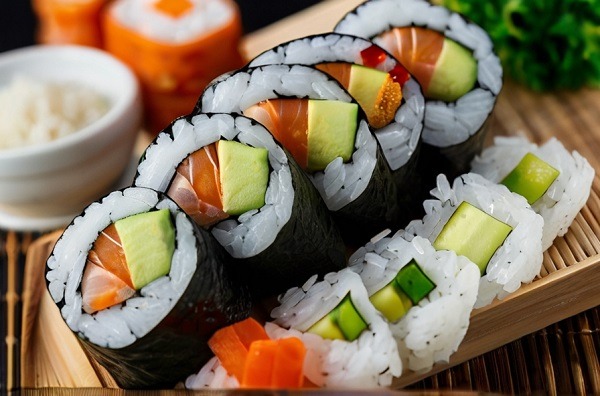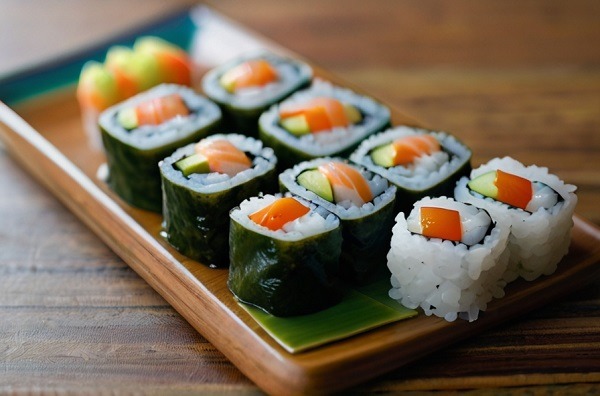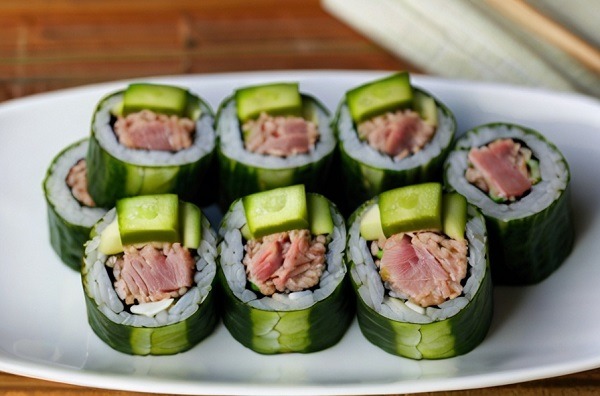If you’re like many people following a low FODMAP diet, you might have heard conflicting opinions about is sushi low fodmap. It’s time to debunk the myth and explore the truth behind sushi and its compatibility with a low FODMAP lifestyle.
Understanding Low FODMAP Diets
Before delving into the specifics of sushi, let’s take a moment to understand what exactly a low FODMAP diet entails. FODMAPs, which stands for Fermentable Oligosaccharides, Disaccharides, Monosaccharides, and Polyols, are a group of short-chain carbohydrates that can trigger digestive discomfort in some individuals.
For those dealing with irritable bowel syndrome (IBS) or other gastrointestinal issues, following a low FODMAP diet can provide relief from symptoms like bloating, gas, and abdominal pain. The premise of this diet is to limit the consumption of foods high in certain types of FODMAPs that may exacerbate digestive issues.
Is Sushi Low FODMAP?
- A low FODMAP diet aims to reduce the consumption of certain carbohydrates that can trigger digestive discomfort.
- Sushi can be enjoyed on a low FODMAP diet with careful ingredient selection and communication with restaurant staff.
Sushi Ingredients and FODMAP Content
When it comes to sushi, the question of whether it’s low FODMAP hinges on its ingredients. Sushi typically consists of several components, each with its own potential FODMAP content. Let’s break down some key ingredients commonly found in sushi and their implications for those following a low FODMAP diet.
1. Rice:
Sushi rice, the staple of any sushi dish, is typically low in FODMAPs. It’s a simple carbohydrate that shouldn’t cause issues for most individuals on a low FODMAP diet.
2. Fish and Seafood:
The primary protein source in sushi, fish, and seafood, is generally low in FODMAPs. Varieties like salmon, tuna, and shrimp are safe choices for low FODMAP eaters.
However, be cautious with processed seafood products like imitation crab, which may contain high-FODMAP ingredients such as wheat or certain additives.
3. Nori Seaweed:
Nori seaweed, used to wrap sushi rolls, is typically low in FODMAPs. It adds a distinctive flavor and texture to sushi without contributing significant FODMAP content.
4. Vegetables:
This is where things can get tricky. While many vegetables used in sushi, such as cucumber and avocado, are low in FODMAPs, others like onions and garlic can be problematic for individuals with FODMAP sensitivities. Opting for vegetable-free or customized sushi rolls can help mitigate this issue.
5. Sauces and Condiments:
Soy sauce, a ubiquitous condiment in sushi, traditionally contains wheat and is therefore high in FODMAPs. However, gluten-free soy sauce alternatives are available, making it possible to enjoy soy sauce without the FODMAP-related repercussions.
Navigating Sushi Restaurants on a Low FODMAP Diet
When dining out at sushi restaurants, communication is key. Don’t hesitate to inform your server or sushi chef about your dietary restrictions. Many establishments are willing to accommodate special requests or offer FODMAP-friendly menu options upon request.
Sushi Low FODMAP
While sushi isn’t inherently low FODMAP due to certain ingredients like soy sauce and potential vegetable choices, it can still be enjoyed with some modifications. By making informed choices and communicating your needs effectively, you can savor sushi while adhering to your low FODMAP diet.
Also read: Is Cottage Cheese Low Carb
How Much Sushi Can You Have?
While sushi can be a delicious and nutritious addition to your diet, enjoying it in moderation is essential to maintain a balanced eating plan. Let’s explore how much sushi you can have while still supporting your health and well-being.
1. Consider Portion Sizes
When enjoying sushi, it’s important to pay attention to portion sizes to avoid overindulging. A typical serving of sushi is around 6 to 8 pieces, depending on the size of the rolls and the ingredients used.
Opting for smaller rolls or sharing a sushi platter with friends can help keep your portions in check.
2. Listen to Your Body
Everyone’s dietary needs and preferences are different, so it’s essential to listen to your body and eat according to your hunger cues.
Pay attention to how you feel after eating sushi—if you feel satisfied and energized, you’ve likely had an appropriate portion. If you feel overly full or uncomfortable, consider scaling back your sushi intake next time.
3. Balance Your Meal
While sushi can be a delicious main course, it’s also important to balance your meal with other nutritious foods.
Consider pairing your sushi with a side salad, miso soup, or edamame for added fiber, vitamins, and minerals. This not only enhances the nutritional value of your meal but also helps keep you feeling satisfied.
4. Watch Your Sodium Intake
Many sushi ingredients, such as soy sauce and pickled ginger, can be high in sodium. While sodium is an essential nutrient, consuming too much can contribute to high blood pressure and other health issues.
Be mindful of your sodium intake when enjoying sushi and opt for low-sodium soy sauce or tamari when possible.
5. Frequency Matters
While it’s perfectly fine to enjoy sushi occasionally as part of a balanced diet, eating it too frequently may lead to overconsumption of certain ingredients or nutrients.
Aim to enjoy sushi as a special treat rather than a daily staple to ensure you’re getting a diverse range of nutrients from other food sources.
Also read: Baked Beans Protein Value
Enjoying Sushi on a Low FODMAP Diet
Here are some points you might follow to enjoy sushi on a low FODMAP diet.
Navigating Sushi Menus
When perusing the menu at a sushi restaurant, it’s essential to keep your low FODMAP diet in mind. Look for sushi rolls that contain safe ingredients like rice, fish, and low FODMAP vegetables such as cucumber and avocado.
Avoid options with high FODMAP ingredients like onions, garlic, and wheat-based soy sauce.
Communication Is Key
Don’t hesitate to communicate your dietary needs to your server or sushi chef. Many restaurants are accommodating and willing to modify dishes to suit your requirements.
Ask about ingredient substitutions or whether they offer gluten-free soy sauce alternatives.
Customizing Your Order
If the sushi menu doesn’t offer low FODMAP-friendly options, don’t fret! Most sushi restaurants are happy to customize your order.
Consider requesting a custom sushi roll without high FODMAP ingredients or opting for sashimi, which consists of thinly sliced raw fish without any added ingredients.
BYO Sauce
To avoid the FODMAP pitfalls of traditional soy sauce, consider bringing your own gluten-free soy sauce or tamari to the restaurant.
This way, you can enjoy your sushi without worrying about hidden FODMAPs lurking in the condiments.
Homemade Sushi Creations
For ultimate control over your sushi ingredients, why not try making your own sushi at home? You can customize each roll to suit your low FODMAP preferences, from choosing safe ingredients to creating your own FODMAP-friendly sauces. Experiment with different combinations and get creative in the kitchen!
Also read: Health Tips To Maintain Lifestyle








